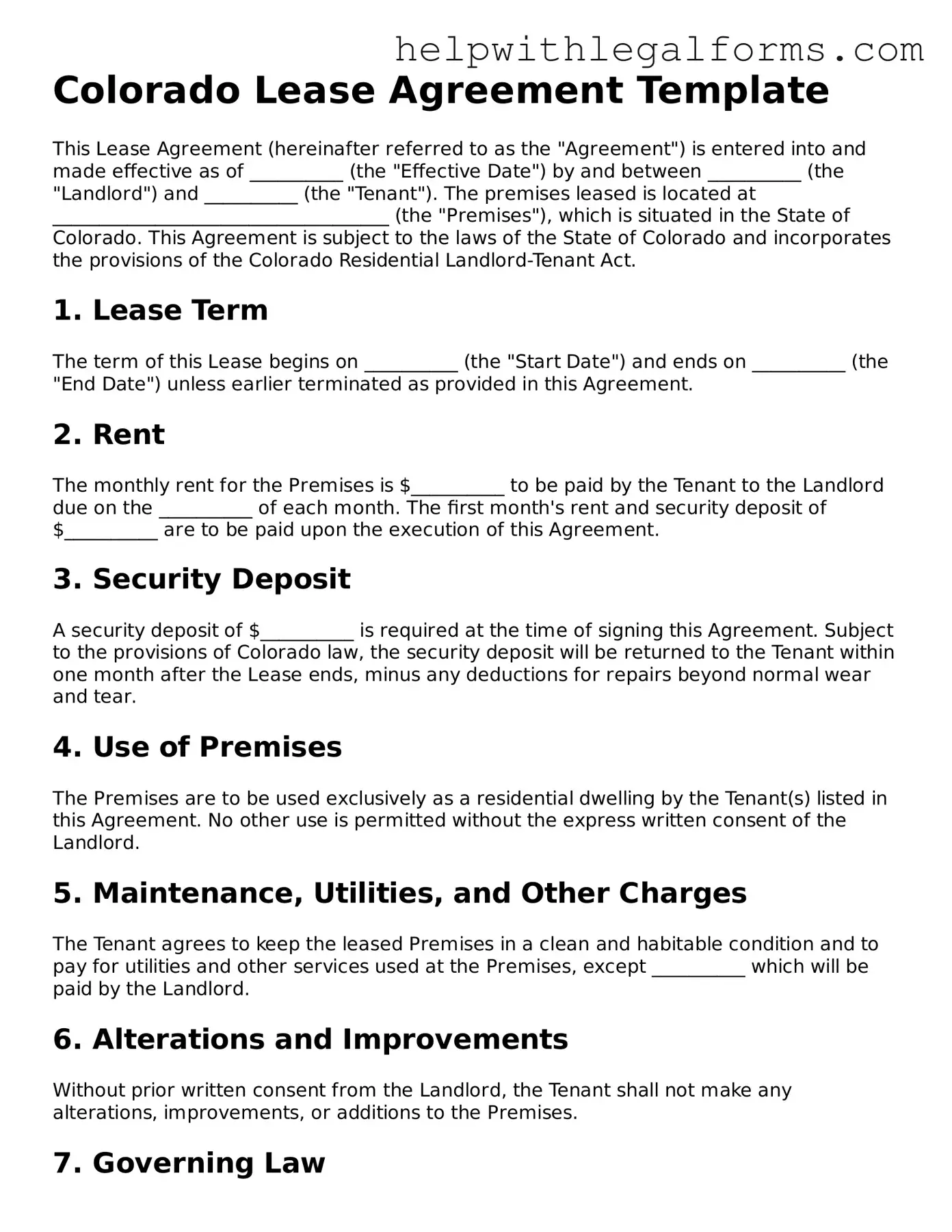Colorado Lease Agreement Template
This Lease Agreement (hereinafter referred to as the "Agreement") is entered into and made effective as of __________ (the "Effective Date") by and between __________ (the "Landlord") and __________ (the "Tenant"). The premises leased is located at ____________________________________ (the "Premises"), which is situated in the State of Colorado. This Agreement is subject to the laws of the State of Colorado and incorporates the provisions of the Colorado Residential Landlord-Tenant Act.
1. Lease Term
The term of this Lease begins on __________ (the "Start Date") and ends on __________ (the "End Date") unless earlier terminated as provided in this Agreement.
2. Rent
The monthly rent for the Premises is $__________ to be paid by the Tenant to the Landlord due on the __________ of each month. The first month's rent and security deposit of $__________ are to be paid upon the execution of this Agreement.
3. Security Deposit
A security deposit of $__________ is required at the time of signing this Agreement. Subject to the provisions of Colorado law, the security deposit will be returned to the Tenant within one month after the Lease ends, minus any deductions for repairs beyond normal wear and tear.
4. Use of Premises
The Premises are to be used exclusively as a residential dwelling by the Tenant(s) listed in this Agreement. No other use is permitted without the express written consent of the Landlord.
5. Maintenance, Utilities, and Other Charges
The Tenant agrees to keep the leased Premises in a clean and habitable condition and to pay for utilities and other services used at the Premises, except __________ which will be paid by the Landlord.
6. Alterations and Improvements
Without prior written consent from the Landlord, the Tenant shall not make any alterations, improvements, or additions to the Premises.
7. Governing Law
This Agreement shall be governed, construed, and interpreted by, through, and under the laws of the State of Colorado.
8. Signatures
IN WITNESS WHEREOF, the Parties have executed this Lease Agreement as of the Effective Date first above written.
Landlord's Signature: ___________________________ Date: __________
Tenant's Signature: ___________________________ Date: __________
Appendix: State-Specific Provisions
- The Landlord is required to provide a habitable dwelling and comply with health and housing codes concerning the Premises.
- Notice for Entry: The Landlord must provide the Tenant with reasonable notice, at least 24 hours, before entering the Premises, except in the case of an emergency.
- Rent Increase: Any rent increase must be communicated to the Tenant with a notice period consistent with Colorado law, typically 30 days.
- Security Deposit: The Colorado law limits the amount that a Landlord can charge for a security deposit and sets forth the timeline and conditions for its return.
